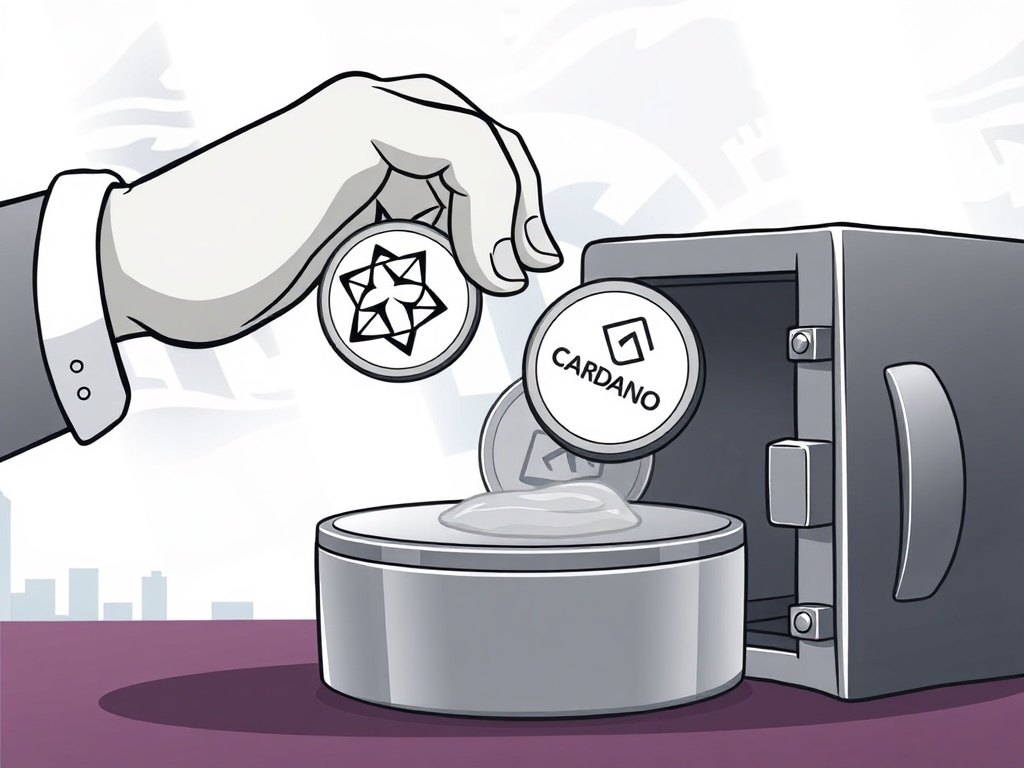BitcoinWorld

Ethereum Fraud Case: Pivotal $25M Theft Trial Moves Forward
The world of cryptocurrency, often lauded for its decentralized and permissionless nature, is frequently at the forefront of innovation. However, with great innovation comes new challenges, especially in the realm of legal interpretation and enforcement. A recent development has sent ripples through the crypto community, highlighting the complex intersection of blockchain technology and traditional law: a U.S. court has denied a motion to dismiss charges in a significant Ethereum fraud case, paving the way for a high-stakes trial.
The Genesis of the Ethereum Fraud Case: Unpacking the Allegations
At the heart of this compelling legal drama are brothers Anton and James Peraire-Bueno. Both graduates of the prestigious Massachusetts Institute of Technology (MIT), they find themselves embroiled in a federal wire fraud case involving an alleged $25 million cryptocurrency theft directly from the Ethereum blockchain. As reported by Cointelegraph, the duo is now set to stand trial, marking a critical moment for how digital asset exploits are viewed under existing legal statutes.
The allegations against the Peraire-Bueno brothers revolve around a sophisticated scheme that prosecutors claim manipulated the Ethereum blockchain’s transaction validation process. While the specifics of the exploit remain under wraps until trial, it’s understood to involve methods that exploited vulnerabilities or specific functionalities within the network, allowing them to illicitly acquire a substantial sum in Ether (ETH). This isn’t just a simple hack; it points to a deeper understanding of blockchain mechanics allegedly used for fraudulent gain.
Decoding the Defense: “Code is Law” vs. Legal Statutes in the Ethereum Fraud Case
One of the most fascinating aspects of this Ethereum fraud case is the defense mounted by the Peraire-Bueno brothers. Their core argument hinges on a popular, albeit contentious, tenet within the crypto space: the idea that “code is law.” They contended that their actions, however profitable, were permissible under the explicit rules and mechanics of Ethereum’s underlying code. In essence, they argued that if the code allowed it, it wasn’t illegal, and that the existing wire fraud statute did not clearly prohibit their specific conduct on a decentralized blockchain.
This argument taps into a philosophical debate central to decentralized autonomous organizations (DAOs) and smart contracts:
- The “Code is Law” Philosophy: Proponents believe that the immutable rules embedded in smart contracts and blockchain protocols should supersede external legal interpretations. If a transaction or interaction follows the pre-programmed logic, it is inherently legitimate, regardless of its outcome.
- Traditional Legal Frameworks: Conversely, traditional legal systems are designed to address human intent, moral culpability, and societal norms. They often look beyond the literal execution of a contract or system to ascertain whether fraudulent intent or illicit gain was present.
The brothers’ defense essentially posited that their actions were akin to finding a loophole in a complex system, not committing a crime. This perspective challenges the very foundation of how legal systems perceive and prosecute actions taken within novel technological environments like blockchain.
The Court’s Verdict: Why the Motion to Dismiss Failed in this Ethereum Fraud Case
Despite the novel arguments presented by the defense, the U.S. court ultimately sided with the prosecution, denying the motion to dismiss the charges. The judge’s decision underscored a critical point: while the technology might be new, the fundamental principles of fraud remain applicable. The court found that the government had “sufficiently alleged fraudulent behavior,” indicating that even if actions technically adhered to a system’s code, intent to defraud could still be established.
Key takeaways from the court’s denial:
- Intent Matters: The ruling emphasizes that criminal intent, a cornerstone of fraud allegations, can be inferred from actions taken on a blockchain, even if those actions exploit system design.
- Beyond the Code: Courts are willing to look beyond the literal execution of smart contract code or protocol rules to assess whether a party engaged in deceptive or dishonest conduct for financial gain.
- Application of Existing Law: The wire fraud statute, a broad federal law covering schemes to defraud using electronic communications, was deemed applicable to blockchain transactions, demonstrating the adaptability of current laws to new technologies.
This decision sets a powerful precedent, signaling that legal authorities are increasingly prepared to apply traditional criminal statutes to alleged illicit activities within the decentralized ecosystem.
Broader Implications: What Does This Ethereum Fraud Case Mean for Crypto?
The progression of this Ethereum fraud case carries significant weight for the entire cryptocurrency industry, particularly for developers, investors, and regulatory bodies. It highlights several critical implications:
- Increased Scrutiny on Exploits: What was once considered a clever exploit or a “white hat” discovery by some within the crypto community might now be viewed as criminal fraud by legal authorities if fraudulent intent is proven. This could lead to more prosecutions for activities that manipulate decentralized protocols.
- Clarity for DeFi and Smart Contracts: The ruling adds a layer of legal clarity (or complexity, depending on your perspective) to the development and deployment of decentralized finance (DeFi) protocols and smart contracts. Developers may need to consider not just technical robustness but also potential legal liabilities stemming from unintended exploits or design flaws.
- Evolving Regulatory Landscape: This case contributes to the ongoing global conversation about cryptocurrency regulation. It demonstrates that governments are not waiting for specific crypto laws but are actively applying existing statutes to bring alleged perpetrators to justice.
- Investor Confidence: For investors, this case could be a double-edged sword. While it might deter malicious actors and increase confidence in the long-term security of the ecosystem, it also underscores the risks associated with novel, unaudited protocols.
The outcome of the upcoming trial will undoubtedly shape future enforcement actions and legal interpretations regarding blockchain-based activities.
Navigating the Future: Challenges and Precedents from the Ethereum Fraud Case
The trial, anticipated to begin in October, will present unique challenges for both the prosecution and the defense. Proving fraudulent intent in a decentralized, pseudonymous environment is complex. Prosecutors will need to meticulously trace digital footprints, potentially link them to real-world identities, and demonstrate that the brothers acted with the specific aim to deceive and defraud, rather than merely interacting with the code as designed.
This Ethereum fraud case is not an isolated incident. Globally, legal systems are grappling with how to regulate and prosecute crimes committed in the digital realm. The U.S. Department of Justice (DOJ) has been increasingly active in pursuing crypto-related crimes, from money laundering to market manipulation and fraud. This case could serve as a significant precedent, influencing how similar incidents are handled in the future and potentially encouraging more international cooperation in crypto crime investigations.
Protecting Your Assets: Actionable Insights from the Ethereum Fraud Case
While this Ethereum fraud case focuses on alleged criminal activity, it offers valuable lessons for every participant in the crypto space:
- Due Diligence is Paramount: Before interacting with any new DeFi protocol or smart contract, conduct thorough research. Understand how it works, its potential risks, and if it has undergone independent security audits.
- Understand Smart Contract Risks: Be aware that even well-designed smart contracts can have unforeseen vulnerabilities that could be exploited. The “code is law” concept does not negate the possibility of malicious actors finding loopholes.
- Stay Informed: Keep abreast of legal and regulatory developments in the crypto space. Understanding the evolving legal landscape can help you make more informed decisions about your investments and participation.
- Secure Your Wallets: Always prioritize the security of your private keys and seed phrases. While this case involves protocol-level exploitation, individual wallet security remains fundamental.
The legal battle surrounding the $25 million Ethereum fraud case is more than just a criminal proceeding; it’s a pivotal moment for the future of decentralized finance and blockchain technology. The court’s denial of the motion to dismiss underscores a clear message: traditional legal principles are adaptable and will be applied to emerging digital landscapes. As the trial approaches in October, the crypto world will be watching closely, as its outcome could significantly influence the balance between innovation, decentralization, and legal accountability. This case serves as a powerful reminder that while technology evolves rapidly, the pursuit of justice for alleged fraudulent acts remains a constant.
Frequently Asked Questions (FAQs)
1. Who are Anton and James Peraire-Bueno?
Anton and James Peraire-Bueno are brothers and MIT graduates who are facing federal wire fraud charges related to an alleged $25 million cryptocurrency theft from the Ethereum blockchain.
2. What was their main defense in the Ethereum fraud case?
Their primary defense was based on the “code is law” principle, arguing that their actions were permissible under Ethereum’s code and that the wire fraud statute did not explicitly prohibit their conduct within the blockchain’s framework.
3. Why did the court deny their motion to dismiss the charges?
The U.S. court denied the motion to dismiss because it found that the government had sufficiently alleged fraudulent behavior, indicating that intent to defraud could be established regardless of whether actions technically adhered to the blockchain’s code.
4. What are the potential implications of this Ethereum fraud case for the crypto industry?
This case could set a significant precedent for how blockchain exploits are legally interpreted, potentially leading to increased scrutiny and prosecution of similar activities. It also highlights the evolving regulatory landscape and the applicability of existing laws to decentralized technologies.
5. When is the trial for the Peraire-Bueno brothers expected to begin?
The trial for the Peraire-Bueno brothers in this Ethereum fraud case is anticipated to begin in October.
Did you find this article insightful? Share it with your network on social media to spark a conversation about the evolving legal landscape of cryptocurrency and the implications of this landmark Ethereum fraud case!
To learn more about the latest crypto market trends, explore our article on key developments shaping Ethereum blockchain security.
This post Ethereum Fraud Case: Pivotal $25M Theft Trial Moves Forward first appeared on BitcoinWorld and is written by Editorial Team





